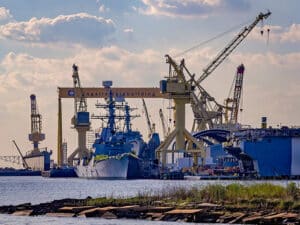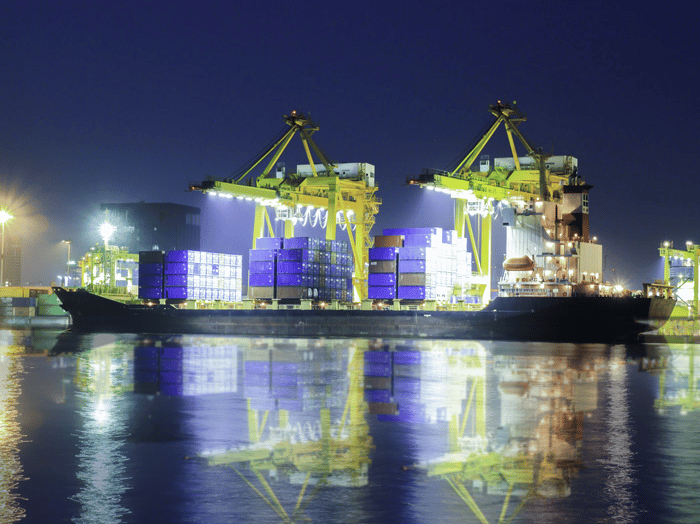
Op-Ed: Good lighting is the best defense against growing disruption
Written by
By Mark Nailer, Maritime Manager, Midstream
Time is one of the most important assets a logistics operator can ever have. The logistics world runs on tight schedules, with multiple points of failure as cargoes are transferred between different modes of transport. Delays stop ships from being used to earn money, and they stop cargoes from reaching their destination on time.
Speed and scheduling have therefore dominated global supply chains since the advent of modern merchant shipping. Yet the consequences of a delay have grown exponentially since manufacturing industries started to adopt a Just In Time model—whereby a constant stream of deliveries replace the role of large stores of warehoused parts and materials. The knock-on effects now go beyond frustrated charterers, even for non-perishable cargoes; today’s delays can have a dramatic impact on every charterer, factory, distributor, haulier, and port.
Recent landmark events have highlighted just how fragile this system is, with blocked shipping channels, port congestion, and extreme weather events amongst the most high-profile disrupters. They have shown that weak links exist at choke points, where disruption hits multiple vessels at once. Ports are one of the most significant of these, and an area where better infrastructure can make a tangible difference.
A new era of disruption

There have been countless crises over the past few years, with some dominating news cycles. Some, like the grounding of the Ever Given in the Suez Canal last year, became talking points on household TV shows. However, not every unexpected disruptive event becomes a global media phenomenon.
One of the most common triggers for port congestion and delays is bad weather. Some particularly extreme weather will receive media coverage, such as the parallel tropical storms in the Gulf of Mexico and Yangzte Delta, which caused port closures and rapid rises in freight delays last year. That event consequently created bottlenecks, and extreme queues in two continents that merited front page stories and analysis.
This kind of delay is more common than news reports might suggest. Local storms may hit only a relatively small region, or even a single port. Indeed, their geographic scale may be so small that they go completely unreported.
Visibility is often the key factor in this disruption. Heavy rain or fog can make it difficult for port staff to operate equipment orperform their functions, if lights cannot cut through. This may mean that work slows to a snail’s pace, or it may mean that work has to come to a stop.
Climate change has already pushed weather-related delays up. Extreme weather is extending stormy seasons, and increasing the risk of freak weather events. Port operators must be prepared for this trend to continue as, even in the Intergovernmental Panel on Climate Change’s best-case projections, challenges will only become more acute.
Yet, weather-related issues often merely exaggerate pre-existing risk, especially where there is inadequate lighting. Night-time operations represent more risk, even when there is no adverse weather, with an increased prevalence of accidents. When a serious incident does occur, part or all of a port’s operations may be suspended for several days—having serious implications on staff welfare, logistics, and insurance.
As the challenges that supply chains face evolve and expand, it is critically important that choke points are not allowed to become weak links. Knock-on delays can trigger huge logistical challenges under the Just In Time model, for shipping, for hauliers, and for manufacturers facing production shutdowns. These huge costs have commercial implications for ports, ranging from diversions to legal or insurance issues, and—in the worst cases—ports may fall out of favor with commercial operators.
Extending operating windows
Port operators have become accustomed to defending against risks, and major stakeholders expect ports to do all in their power to ensure safe, flexible, reliable operation. This often means planning for the worst and hoping for the best.
In practice, this means port authorities and operations have to do everything possible to ensure that they can withstand a disruptive event through operational flexibility and safeguards. Often, the most effective way of achieving this is to widen the window in which work can safely be carried out.
Lighting is an overlooked enabler, contributing to the overall effectiveness of high performing ports—particularly by preventing unnecessary disruption or down time. Strong, high-quality lighting that properly illuminates congested areas such as areas with stacked containers can cut through weather and extend a port’s operating window. Achieving this is not as simple as selecting a single lighting level; to meet these goals, lighting has to be delivered as infrastructure that complements broader systems and operating conditions.
When approached methodically, this added resilience and flexibility can be dramatic. The right solutions can also minimize the impact on operations of dirty power scenarios in ports, whereby current pulses, voltage variations, frequency variations and surges occur and have the potential to damage crucial equipment, whereby good design creates more resilient systems with well-placed and appropriate circuit breakers, fuses, and switches. In addition, it they can improve working conditions for port staff while reducing insurance premiums.
It is important that ports work consultatively with lighting suppliers to create whole systems, that deliver in the real-world port environment. At Midstream, we work as a partner with a port operator from the very early design stages to scope out their lighting requirements and create bespoke systems that deliver the highest quality of light and resistance to even the most extreme weather.
These systems utilize high quality LED luminaires, designed and tested to provide not only high lighting levels, but high-quality uniform light distributions allowing for superior visibility across the entire working site – often increasing light levels by more than 50% in the terminal’s darkest areas. Coupled with comprehensive design, these systems deliver high color rendering light enabling near daylight visibility in the most critical areas.
As a general rule, the most successful ports have always been the most resilient. As more decision makers gain a deeper understanding of the fragility of their supply chains, and as the risk of bottlenecks and delays increases, this link will only strengthen over the coming years. Ports must improve their infrastructure, including their lighting, today to secure their future success.




